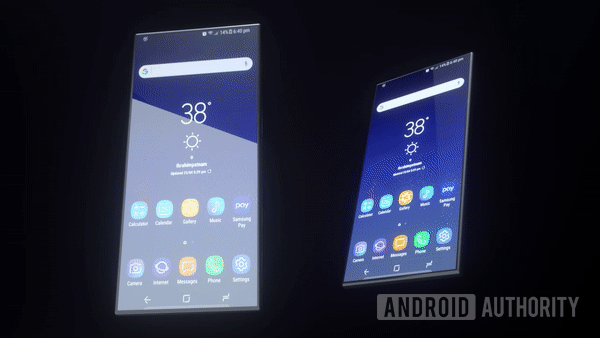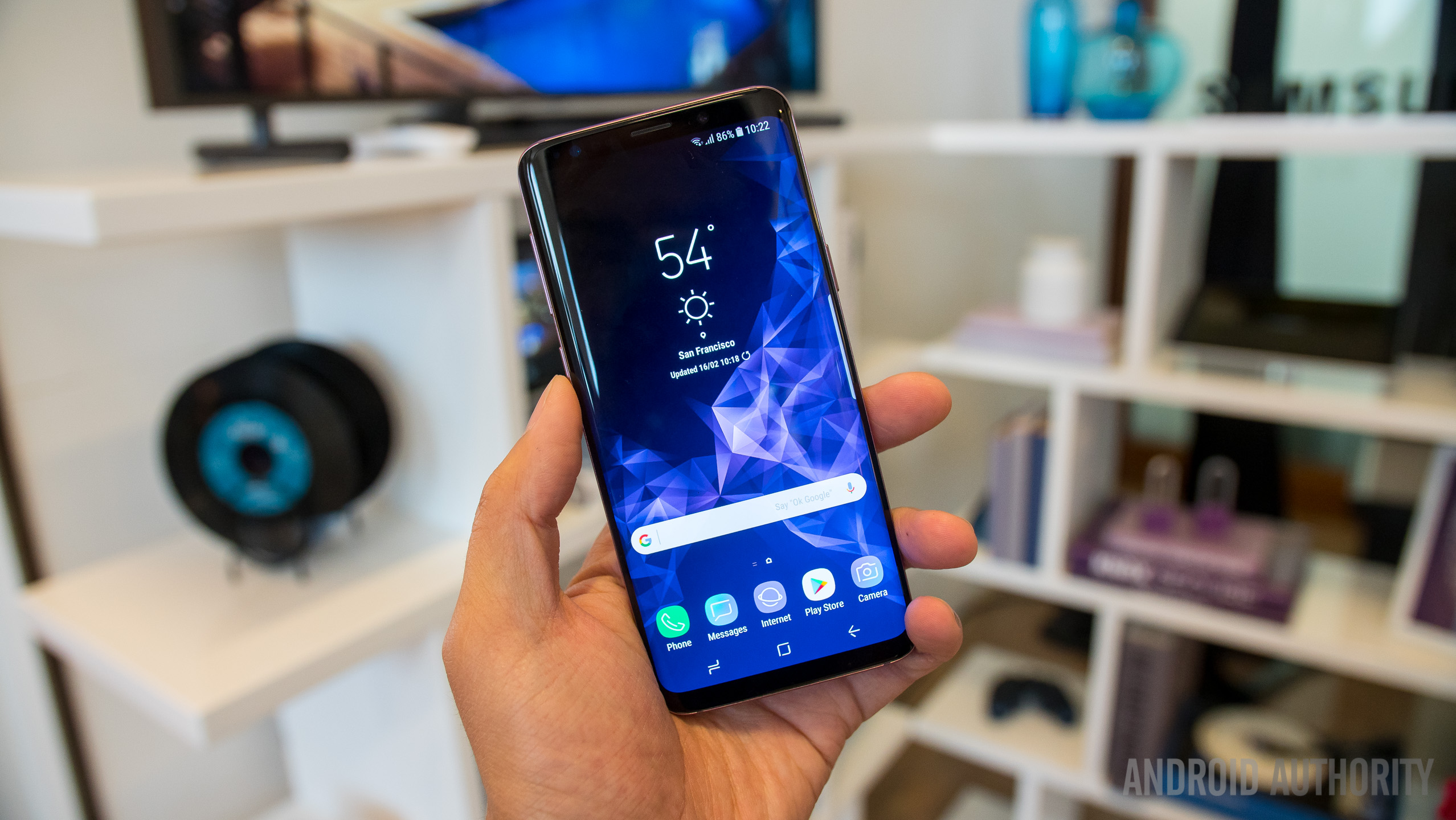There’s been a lot of chatter about Samsung’s upcoming folding phone, sometimes referred to as the Galaxy X, and how it might work when it finally arrives (which is early in 2019, if you believe the rumors).
It’s very exciting and all, but the problem is, it can be difficult to visualize the device being described. With this in mind, we’ve decided to illustrate some of the concepts discussed in recent speculation to give you a better picture.
A primer on folding phones
Samsung and other Android manufacturers have been preparing for years to produce a new kind of smartphone. These would take advantage of flexible displays so that they can fold without being damaged. The phone’s body may make use of a hinge to allow this fold to take place, though the body itself, and possibly the battery too, may also be able to bend.
The precise way in which these phones would fold stems from one key design decision: inward folding (in-folding) or outward folding (out-folding) screens.
The in-folding approach would be like that of a clamshell device: you would open it to reveal the display (seen below, right). The out-folding approach would be to include a flexible display that wraps around the front and back of the device (below, left). Either way, the device is expected to operate just like a small tablet or large phablet when completely unfolded,
Samsung has reportedly prototyped both types of handset, but current speculation suggests its first generation of folding phones will adopt the in-folding approach. Let’s now take a look at what kind of designs they might have.
The Galaxy X’s folding phone design
Below are three ideas we’ve heard about for Samsung’s folding phone. For the purposes of this article, let’s assume the device will have an 18:9 display when unfolded (though this format may change when folded).
- A phone that folds three times, via Patently Mobile.
- A phone with a 7.3-inch display that folds to leave a 4.5-inch usable area, via MK.
- A phone with a 7- to 8-inch display that folds ⅔ of the way up, via ETNews.
Note: We have aimed to illustrate the device mechanics only, not the precise size or design. These mockups are based only on speculation and the Galaxy X may or may not look like anything this.
Option one
The first possibility is based on a Samsung patent and would allow for a phone that you could fold into thirds: the top part of the handset would fold backward, the bottom third forwards, and they’d squash down in the middle to leave a surface area about the size of a credit card (if the display is around seven inches out-folded). It sounds very cool, even if it’s probably not going to happen.
With a ~7-inch diagonal screen, you’d have to have an incredibly thin body, and some very sophisticated internal components, in order to fold down into thirds. It seems a bit too ambitious for a first-generation product, and the ~3.5-inch screen area you’d be left with wouldn’t be big enough to do much with (though it could act as a small, always-on display).
Option two
This model would fold once, about 3/4 of the way up the handset, leaving space for larger components in the bottom half of the unit, and a big enough display area for use as a small — but fully featured — smartphone.
It might seem slightly awkward, but there’s a reason Samsung may favor this type of setup over the closed clamshell approach: it would mean the phone always allows some interaction, even when folded, which is ruled out by a clamshell design (that is, unless Samsung plopped a screen on the back of the clamshell — something which actually has been speculated as part of a weird triple display folding device idea).
The opened-up tablet experience may not be appropriate or may be unwieldy, in some circumstances, so perhaps Samsung wants to ensure users can still do a quick check of the phone at a bus stop, or send a short message on-the-go, without opening out the full display.
Option three
The idea behind this version is that the top or bottom part of the screen would fold forwards, making the device smaller, but still allowing for a portion of the screen to remain usable.
With an 8-inch display, this type of handset is unlikely to work: it would mean a 7.2-inch by 3.6-inch display, plus bezels, and that may be too big to be practical. It would always be 3.6-inches on its narrowest side and that’s just too wide a fit for most pockets — and Samsung no doubt wants the phone to remain pocket-friendly.
A phone with this design but a smaller-than-8-inch screen is more likely, but it may encounter the same problem as with option one: a screen area that’s potentially too small to do anything purposeful with. ETNews suggested it might display the time and possibly things like the caller, if and when the phone receives a call.
This design (as with option two) would make it easier to pursue a truly bezel-less screen, however: the Galaxy X wouldn’t need a space for the front camera if the rear-camera could also face forwards.
Wrap up
There are lots of ways Samsung could go with this and we can’t rule out any design. The full clamshell, the outward folding approach like in this Oppo patent, a quadruple folding phone — anything’s possible at this stage. Regardless, we hope this has given you a better understanding of what Samsung might launch in the new year. We can’t wait for it.
What kind of folding phone are you hoping Samsung will deliver? Give us your thoughts in the comments.






0 coment�rios:
Post a Comment